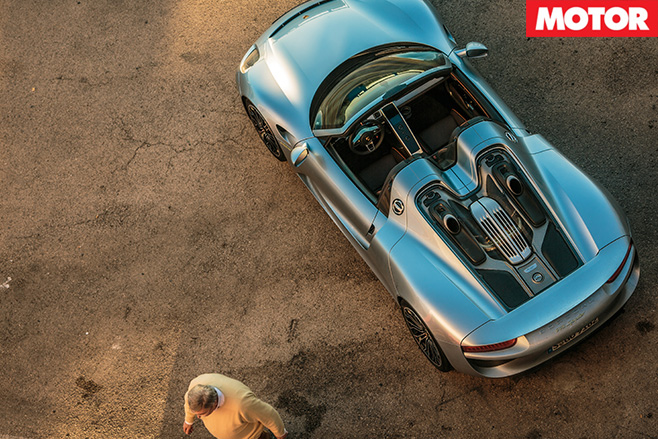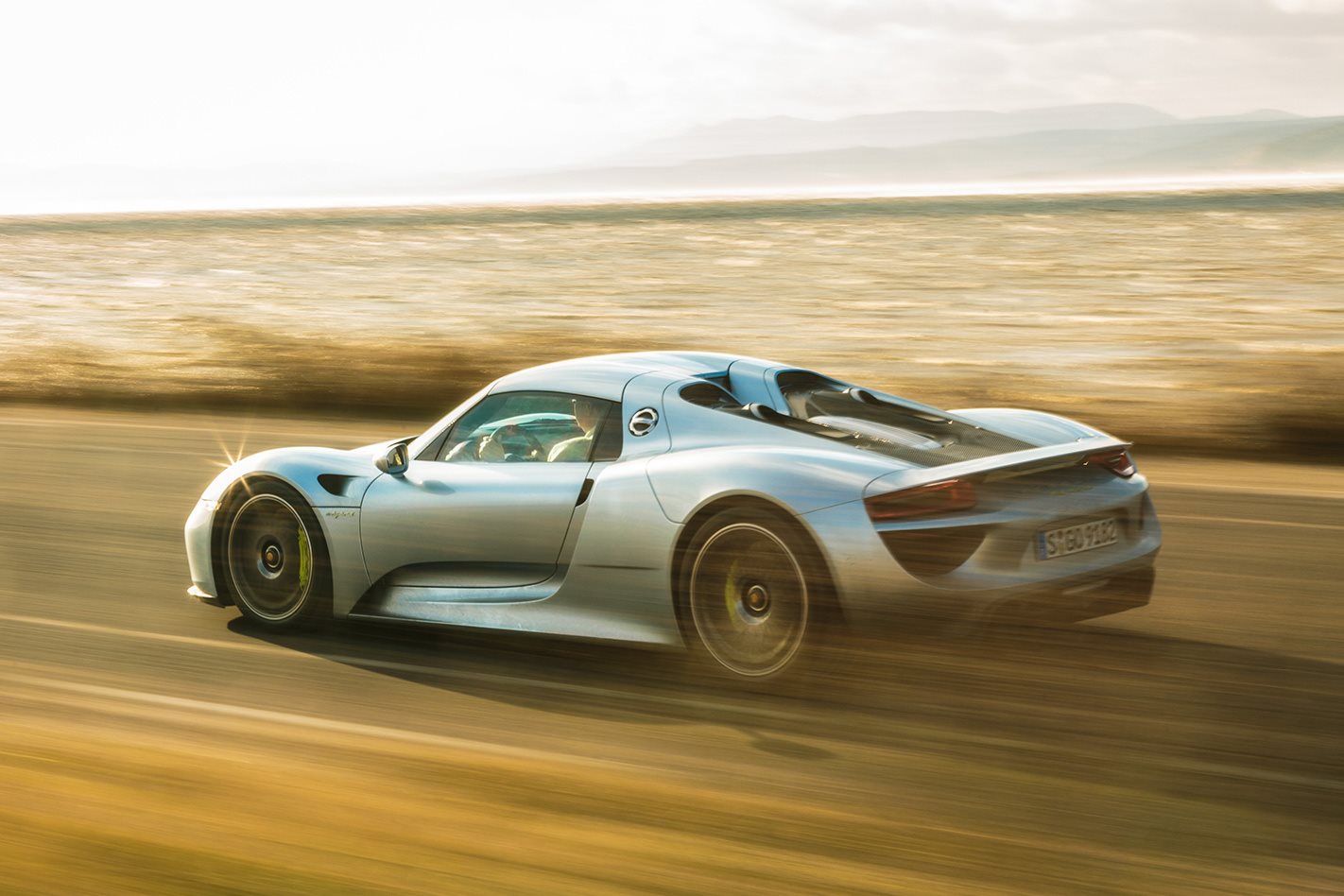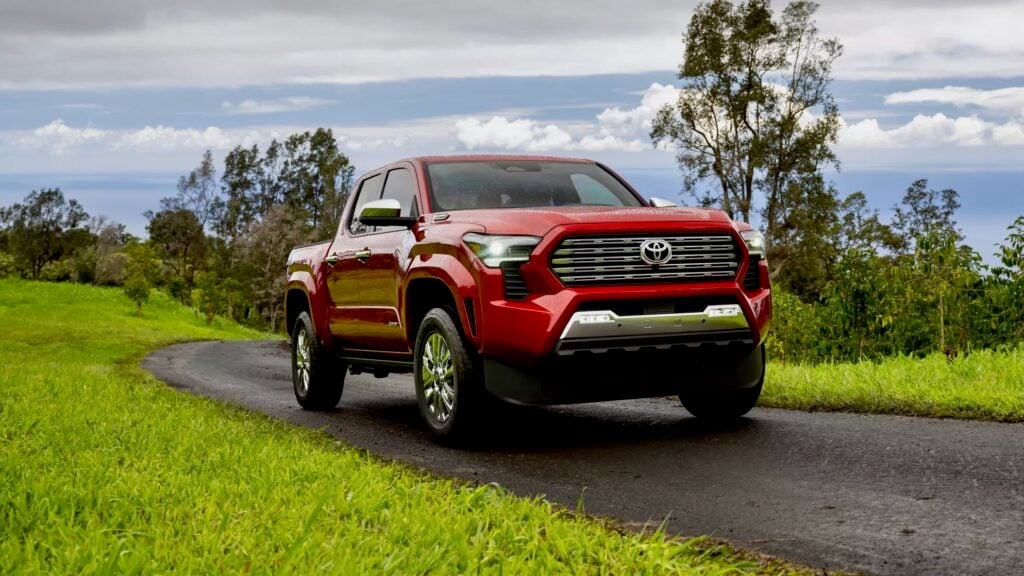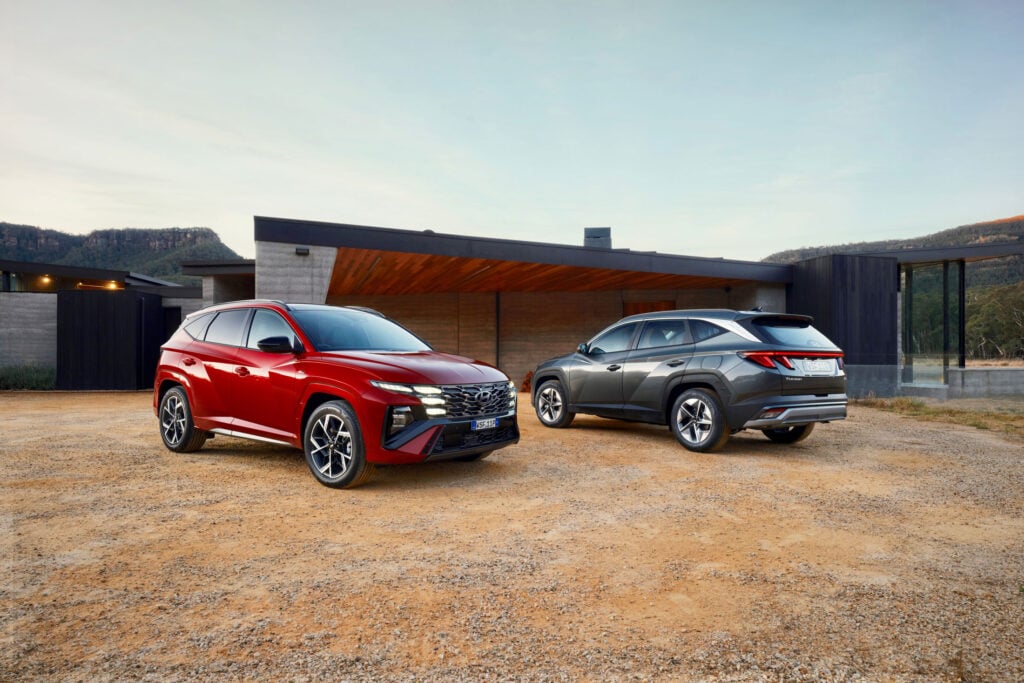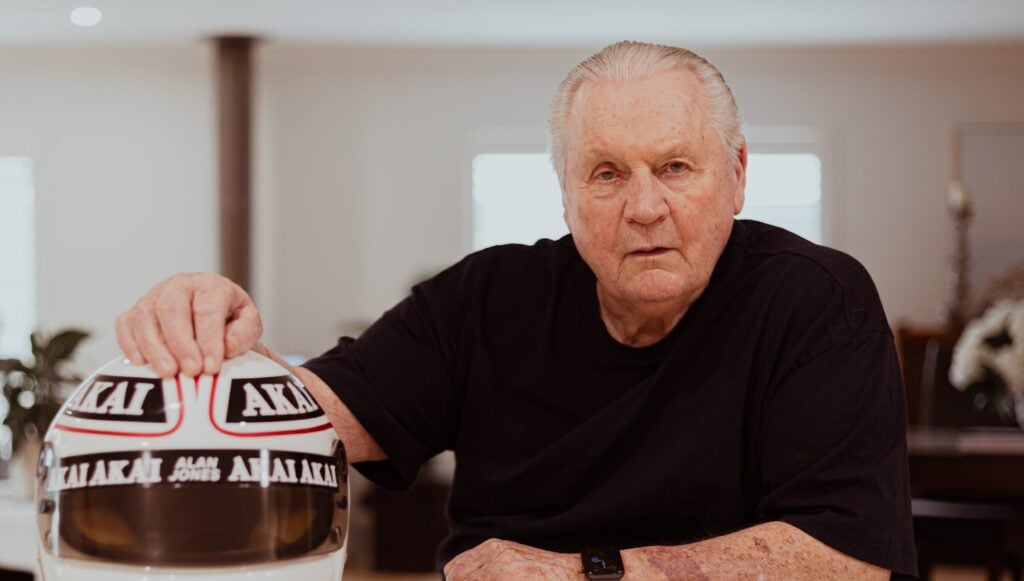Doomsday weather in Stuttgart. The temperature reads minus two degrees as swollen skies roll over with a mix of rain, sleet, snow and haze. Could our road trip suddenly be in jeopardy?
The day before, Frank Walliser, engineer extraordinaire, had called an emergency meeting. There was no way this triple-hearted roadster could be unleashed in such adverse conditions on uncompromising low-profile summer tyres.
Officially, Porsche does not offer all-season rubber for the 918 Spyder. After all, driving in sub-zero temperatures would probably refrigerate the lithium-ion batteries to premature extinction.
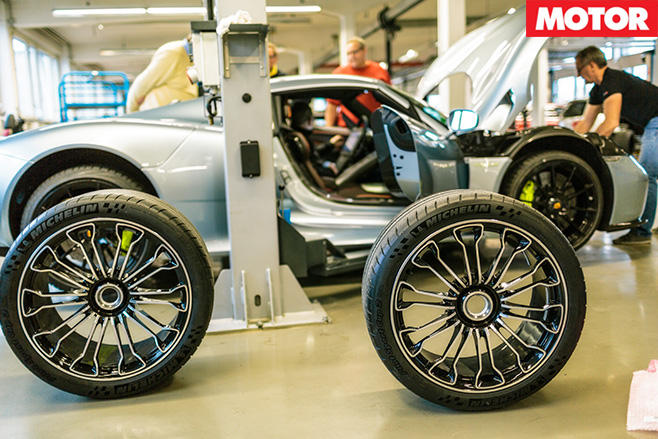
One could drive non-stop from Stuttgart to Valencia in just over 13 hours, but we took the 1741km scenic route which called for 22h 48min hours of wheel time. My time capsule passenger is Sebastian Rüger, a 31-year-old whizz-kid engineer who knows a lot about hybrids and practically everything about the 918.
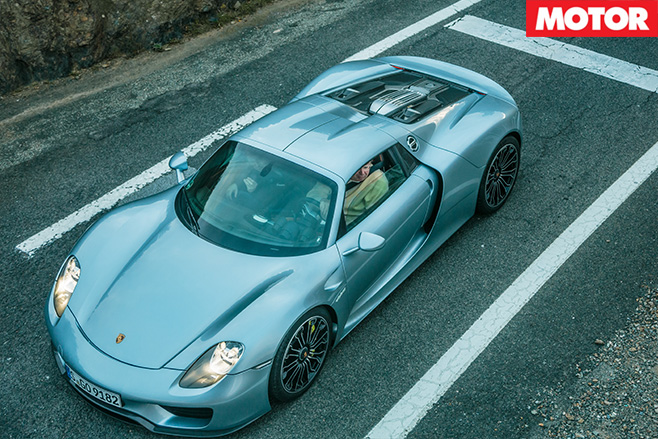
In tandem, the compact power packs muster 210kW and an impressive aggregate torque of 585Nm. Depending on one’s driving style, E-Power offers a maximum zero emission range of 31km or a top speed of 150km/h.
On the feeder lane to the A81 motorway, a bomb dropped on our acoustic idyll as the V8 engine entered the scene like a bat out of hell – loud, harsh and furious. The ice-cold liquids inside the angry flat-crank, direct-injection, normally-aspirated high-revving 4.6-litre engine were evidently at odds with the under-challenging 120km/h speed limit.
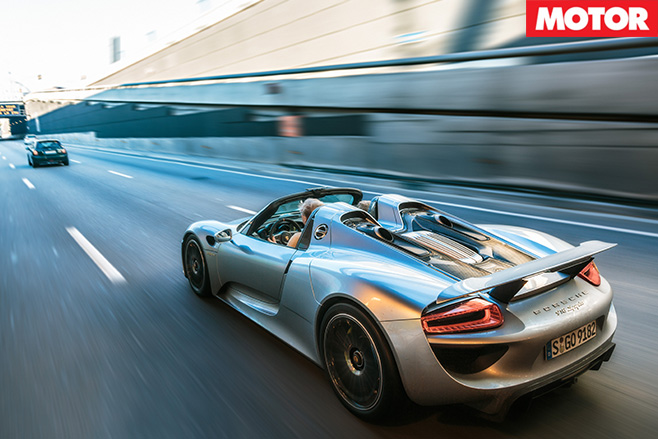
But it’s only from 7000rpm to the cut-out at 9150rpm that the ‘steam hammer’ effect eventually compresses the running characteristics to a dense energetic flow.
“In essence, the 918 is a street-legal track tool,” project leader Eugen Obermann says. “This statement not only applies to the drivetrain, but also to the chassis, the steering and the brakes.”
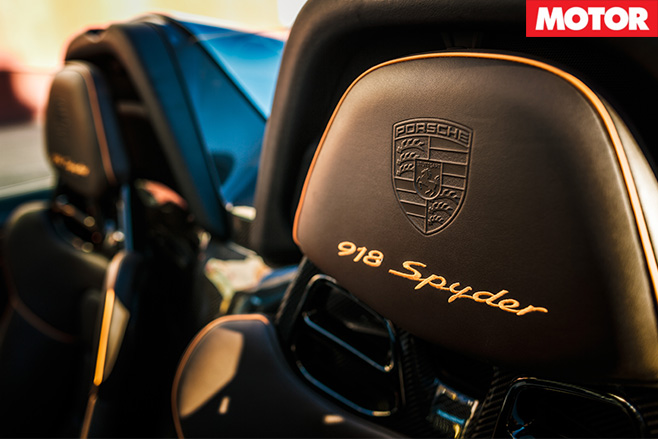
The boot (110L when the roof is in place) has race car space, rear visibility is compromised by the gills, louvres and the XXL wing, and noise levels at speed match a race car for pungency and persistence.
Fuel consumption on the other hand corresponds to the drinking abilities of a compact car. We didn’t come close to the claimed 3.1L/100km, but the observed average of 10.6L/100km was not bad for a 345km/h super coupé.
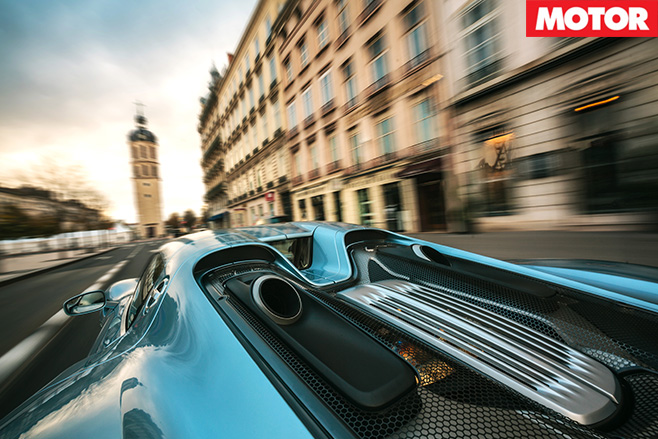
Depleting a full load of E-Power is the easiest trick in the book: just ignore the detent in the throttle pedal or push the red H (for hot lap) button – and don’t forget to brace for the physical afterburner effect.
Restoring energy to its 6.8kWh peak is equally simple: keep the engine spinning at medium revs for about 15 minutes in Sport – or Race – and the green dots on the dash will reassemble in full force.
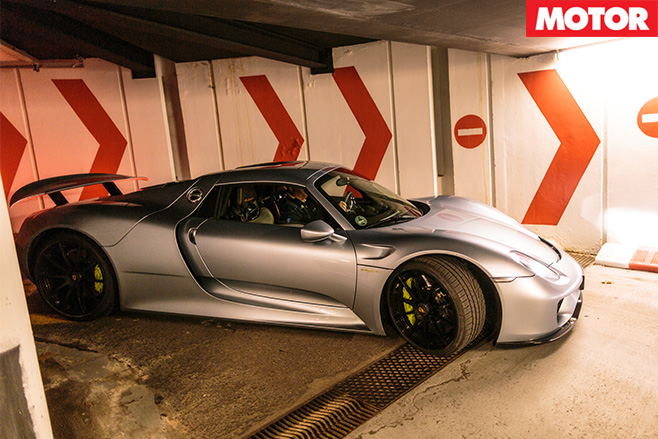
While a high-speed wall charger (around A$30,500 plus installation) would have performed the act in 25 minutes, hooking the car up on (s)low-voltage household mains extended the process by four hours.
The batteries always keep a 25 per cent emergency charge – in case you take an impromptu detour to the racetrack where the entire energy reservoir may be depleted at a push of the ‘H’ button.
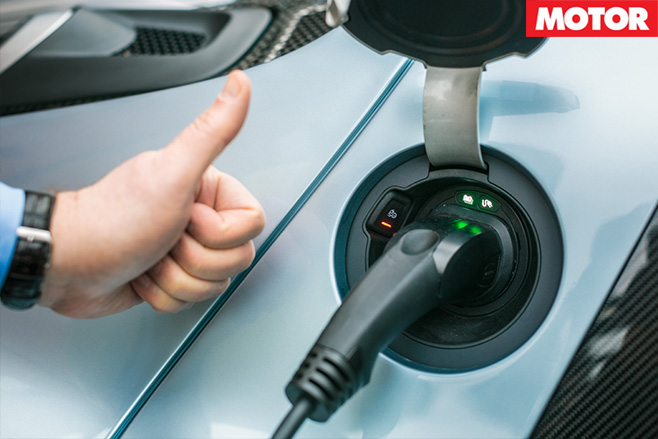
The next morning, S-GO 9182 follows the river Rhone south in tip-toe fashion, elegantly swooshing past slower traffic, and soaking up applause and thumbs-up gestures. When fully charged, battery power alone can whisk the 918 from 0-100km/h in a brisk 6.2sec.
Some 19km down the road, the black box summons hybrid mode signalling that the V8 will now cut in or be phased out according to throttle orders. Not sufficiently inspiring? Twist the mode dial to Sport and try to suppress a big smile when it grabs you by the neck and glues your bum to the seat.
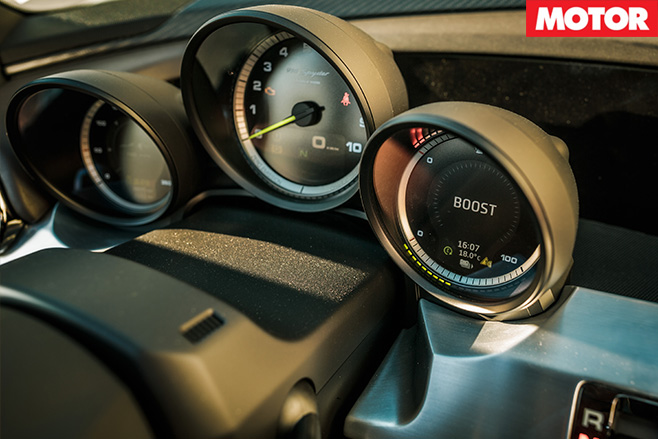
It dries your throat, moistens your palms, and fills your nose with the sweet smell of fast flowing electrical current. It reduces CO2 emissions by making you hold your breath in a mix of astonishment and awe.
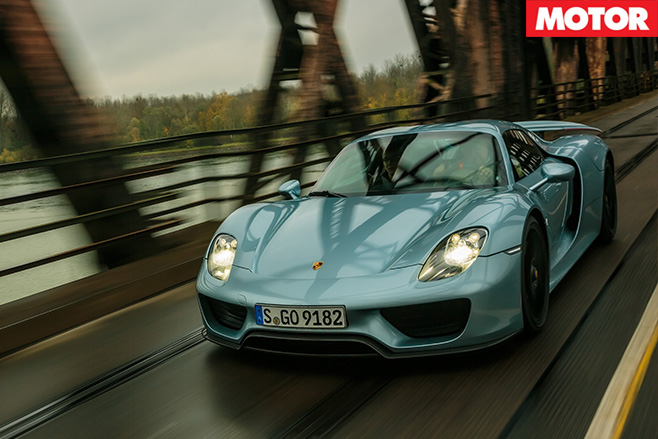
Rolling at a steady 128km/h through radar-infested territory, we kill time rating the sensational Burmester sound system, the authentic leather seats (are they really A$36,000 nicer than the standard cloth upholstery?), the body-colour ignition key left of the steering column (why is the wheel only adjustable in reach?), and the electric auxiliary heating (a whopping $A9000 – bum warmers are free, though).
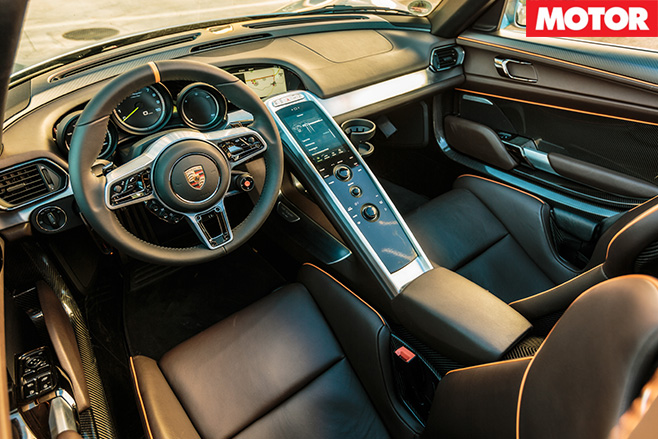
The most demanding section of the entire voyage is the winding coastal road between Perpignan and the Spanish border. Although the tarmac is narrow – bumpy and dotted with blind crests – the 918 tracks with the precision of a Strike Fighter, clings like a magnet to bitumen, and decelerates like an F1 car, only to reach out for the next straight with expandable elasticity.
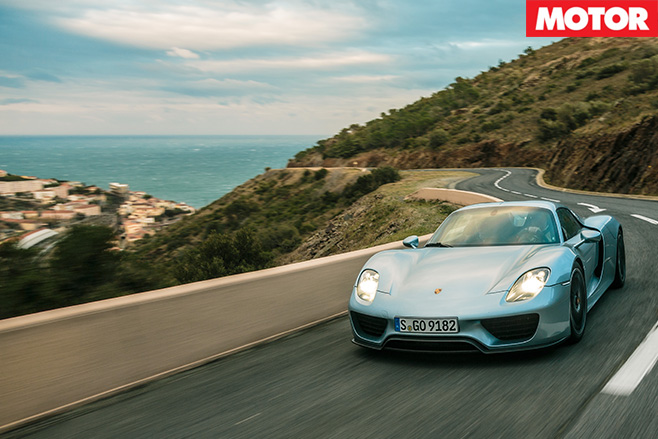
The 2.6sec acceleration from 0-100km/h very nearly ends in my cardiac arrest, and when the speedo shows 200km/h a mere 4.7sec later, adrenalin flows like a burst fire hydrant. It’s mildly terrifying.
Scared by my courage, I hit the brakes and immediately wish for four-point belts, Schwarzenegger forearms and eyeballs capable of staying in their sockets. Instrumental in this mind-boggling energy squashing performance are carbon-ceramic discs the size of New York pizzas, improved Michelin tyres boasting a secret superglue compound, and the riveting recuperative performance of the hybrid brake system, which can pull up to 0.5G.
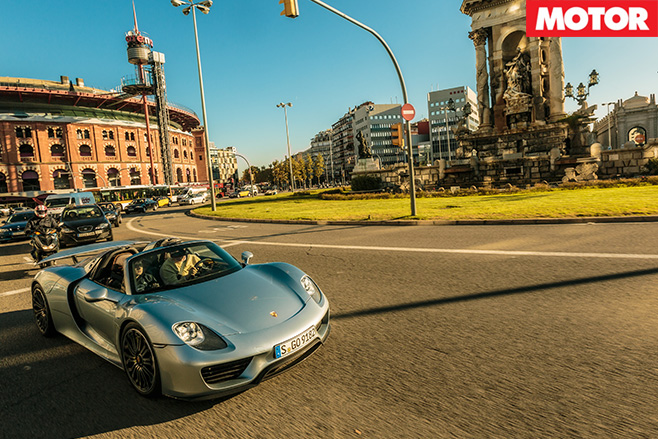
Only professional masochists, or Max Mosley, would have the balls to switch the damper calibration from ‘Have Mercy’ (standard) to ‘Last Rites’ (sport). The fast-responding front axle lift (yours for just A$13,500) on the other hand dramatically reduces the nose bleed factor.
The large tail rudder will, at the push of a button, freeze in two different positions for maximum downforce or maximum speed. Even with energy packs depleted, this plug-in supercar can still top 326km/h, but Spanish jails are almost as bad as Indonesian ones, so we didn’t even try.
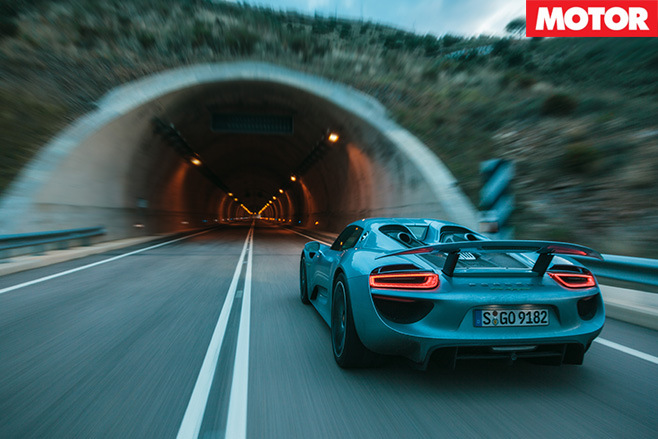
We arrived at il circuito Ricardo Tormo on the northern outskirts of Valencia for a quick trackside lunch. In pit lane, the 918 finally shed its Dr Hyde costume for the more appropriate Jekyll livery.
Sadly, all it takes to put your driving skills into perspective is one quick lap next to rallymeister, Walter Röhrl, who drives the entire lap in ‘D’ and still gets to the finish line light years before the next quickest.
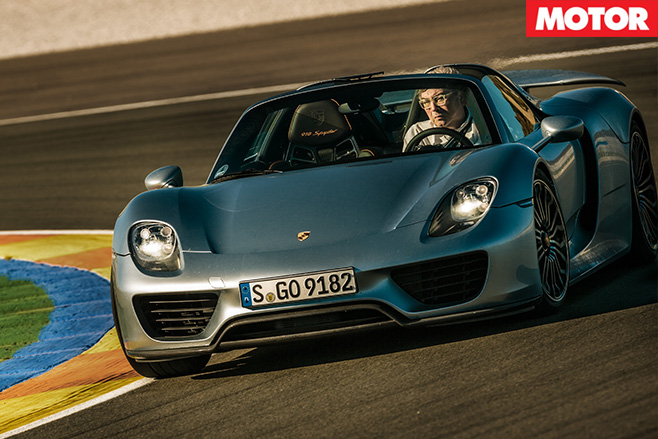
As the track closes at 5pm, we point the Porsche’s low-slung nose toward the open road one last time. Although I am strapped to a A$1.2m spaceship, my fear factor has shrunk to 911 GT3 levels since we left Zuffenhausen barely three days ago. The 918 may not be as easy to drive as a 911 Turbo, but it certainly isn’t a razor blade on wheels either.
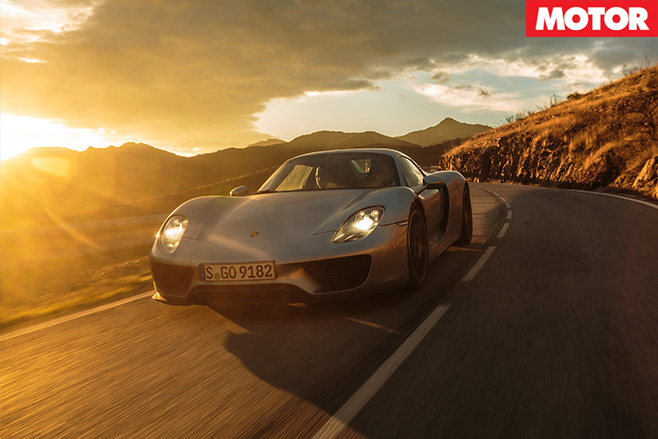
At no extra cost, Porsche will shrink-wrap the Spyder in matte black, Martini Racing livery or the striking Salzburg Racing design which allegedly pays tribute to a certain Porsche legend, Ferdinand Piech.
Porsche intends to manufacture 918 units of the 918, but so far only two-thirds of that number have customer names attached. Is this déjà vu of the Carrera GT, which found a mere 1270 takers despite a production target of 1500 units?
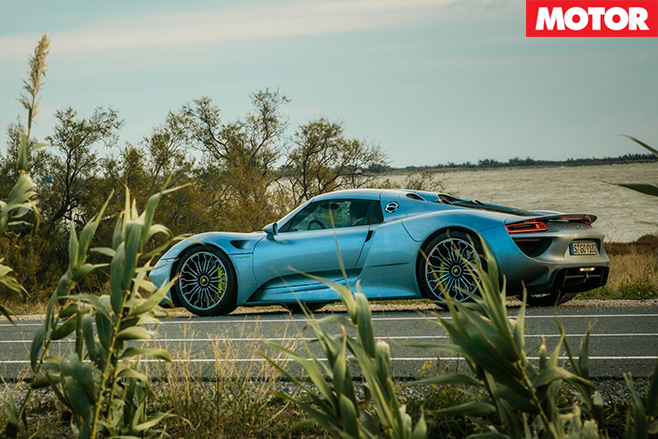
Just in case you’re in the market for one of these rare automotive dream tickets, bear in mind there are two seat sizes to choose from (small did not work well for me…), that plug-in charging really is only optional icing on the cake, and that this car is, in real life, so much more than the sum of its parts.
